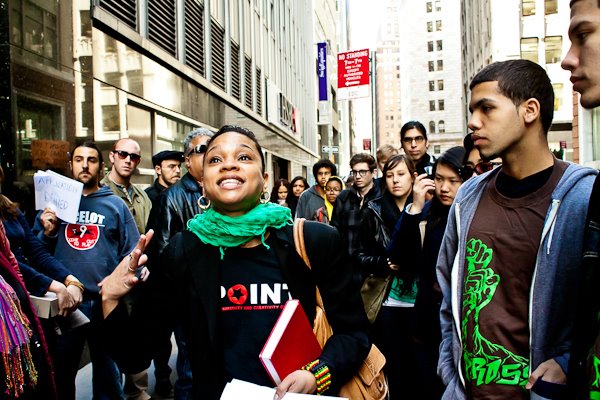
Advocates say trash would be burned in poor neighborhoods
Bronx community groups took to the streets of Manhattan on April 9th to protest Mayor Michael Bloomberg’s plans to test new garbage disposal technology they fear will end up hurting the South Bronx.
Representatives from The Point CDC, Nos Quedamos, Youth Ministries for Peace and Justice and other community organizations teamed up outside the city’s Economic Development Corporation headquarters downtown to voice their concern over the mayor’s plans to to sign contracts with private businesses to convert trash into energy in newly built incinerators.
The opponents say the incinerators needed for the conversion process would almost certainly be built in industrially-zoned neighborhoods like Hunts Point and Port Morris, adding to existing pollution problems.
“At the end of the day, we know where this is going to end up,” said Kellie Terry-Sepulveda, executive director of The Point CDC. “We’re against anything that will further burden the neighborhoods.”
Terry-Sepulveda and other opponents say the technology risks creating more problems than it may solve, by polluting the air in areas around the plant.
“They’re not looking at the science of this,” she said.
Terry-Sepulveda pointed out the example of the New York Organic Fertilizer Company, which opened in Hunts Point in 1994 and blanketed the area with foul odors that sickened residents for over a decade before closing last year. The plant converted sewage sludge into fertilizer pellets that were later shipped to citrus farms in other states. Although the process was promoted as environmentally friendly because it recycled sludge rather than burying it in landfills, residents and environmentalists condemned it because of its harmful local impact.
Boosters of the new thermal processing technology say it burns cleaner than outdated garbage incinerators, but some environmental advocates disagree, and say it will negatively impact the health of nearby residents as badly as the old trash burning methods.
According to the New York Public Interest Research Group, a liberal advocacy organization, studies show the new incinerator technologies emit comparable levels of toxic emissions” to conventional incinerators, and that they also emit “particulate matter contributing to heart & respiratory disease.”
NYPIRG went on to say in a statement that there have been “malfunctions, explosions and shutdowns” in the implementation of the technology in other countries, including Germany, and that “experimenting with these new technologies in a densely populated area such as New York City is unnecessary and risky.”
“Given NYC’s zoning laws, most of the locations where an incinerator could be sited in NYC are in, or adjacent, to low-income communities of color that are already disproportionately burdened by pollution,” the statement warned.

